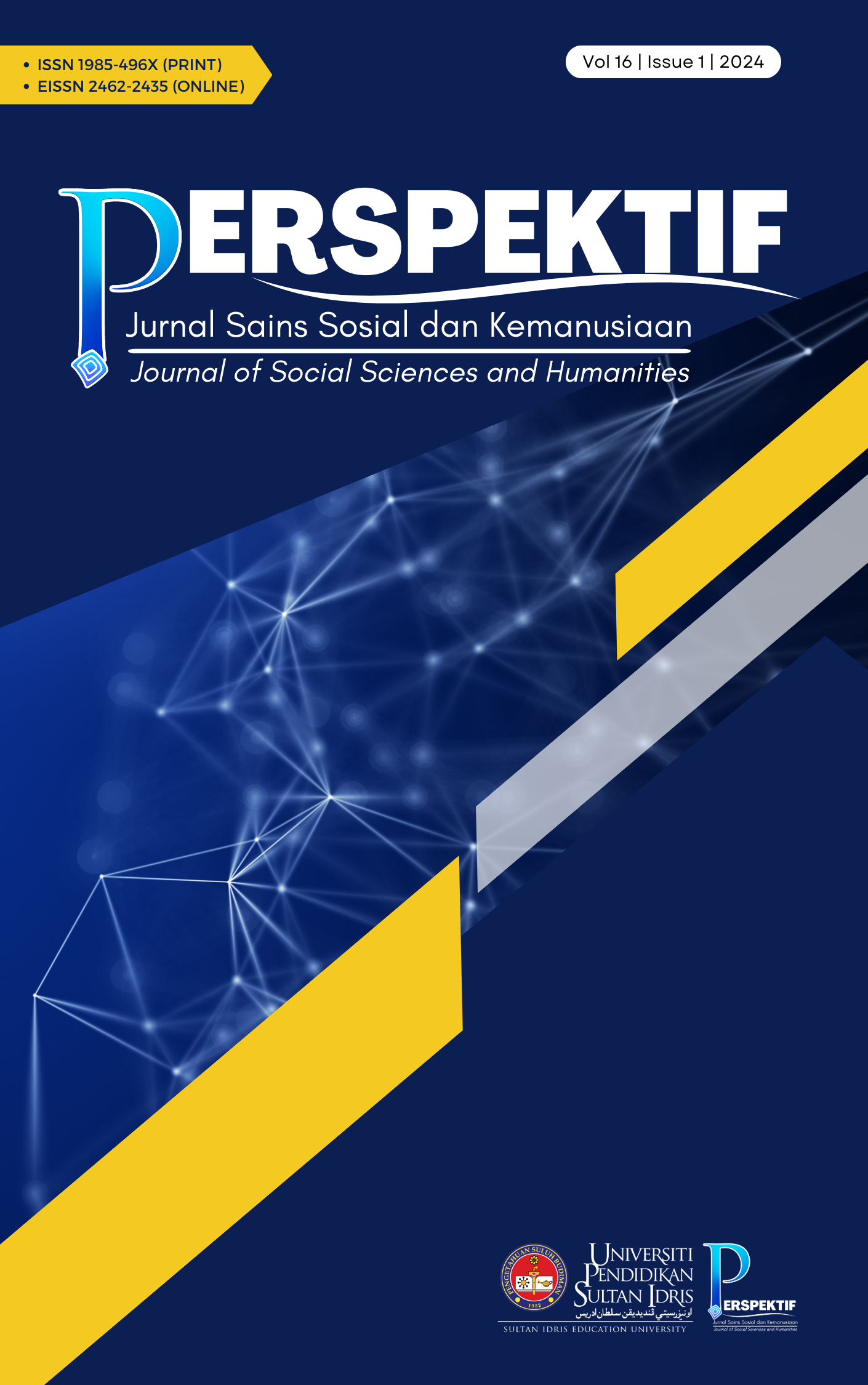The Effect of Habitual Physical Activity on Adolescents Self-Confidence and Self-Esteem
DOI:
https://doi.org/10.37134/perspektif.vol16.2.1.2024Keywords:
Habitual physical activity, self-confidence, self-esteem, psychology health, adolescentAbstract
This manuscript aims to identify the effect of physical activity norms on self-confidence and self-esteem and determine the mediating effect of self-esteem on the relationship between physical activity norms and adolescent self-confidence. A total of 286 students studying at one of the Local Public Higher Education Institutions were involved as respondents to the study. Research data was obtained through a questionnaire. self-answer questionnaire. Research data were analyzed using linear regression analysis and independent t-test. The results of the study found that physical activity norms have a significant effect on self-confidence (β=0.167, p-value<0.05) and self-esteem (β=0.4223, p-value<0.05) of teenagers. Mediation analysis also found that self-esteem had a significant mediating effect on the relationship between physical activity norms and self-confidence. This study is expected to provide useful information to the Ministry of Higher Education in an effort to design various physical activities that specialize in male and female students so that their psychological well-being is preserved.
Downloads
References
Alex, A., F. and Maria, R., D. (2003, Jun). Validation and reliability of the Baecke questionnaire for the evaluation of habitual physical activity in adult men. Original Article 9(5), 129-135. https://doi.org/10.1590/s1517-86922003000300002
Ali, H., A., Ramazan, A., & Abdullah, A. (2010, December). Analyzing undergraduate students' self confidence levels in terms of some variables. Procedia-Social and Behavioral Sciences, 5, 1205-1209.https://doi.org/10.1016/j.sbspro.2010.07.262
Beattie, S., Hardy, L., Savage, J., Woodman, T., and Callow, N. (2011). Development and validation of a trait measure of robustness of self-confidence. Psychol. Sport Exerc. 12, 184-191. https://doi.org/10.1016/j.psychsport.2010.09.008
Berbari, G. (2018, March 22). How Working Out Makes You a More Confident Person, According to Science. Elite Daily. https://www.elitedaily.com/p/how-working-out-makes-you-more- confident-from-the-inside-out-according-to-science-8565734
Bull, F. C., Al-Ansari, S. S., Biddle, S., Borodulin, K., Buman, M. P., Cardon, G., ... & Willumsen, J. F. (2020). World Health Organization 2020 guidelines on physical activity and sedentary behaviour. British journal of sports medicine, 54(24), 1451-1462. https://doi.org/10.1136 /bjsports-2020-102955
Cherry, K. (2021). 11 Signs of Low Self-Esteem. Very Well Mind. https://www.verywellmind.com/signs-of-low-self-esteem-5185978
Durai, C., and Anantharaj G. (2017). Comparison of self-motivation and self-confidence between sportsman and non-sportsman. International Journal of Advance Research and Innovative Ideas in Education 3(5), 1894-1897
Ferkany, M. (2008). The educational importance of self-esteem. Journal of Philosophy of Education, 42(1), 119-132. https://doi.org/10.1111/j.1467-9752.2008.00610.x
Ferron, C., Naring, F., Cauderay, M., and Michaud, P., A. (1999, April). Sport activity in adolescence: associations with health perceptions and experimental behaviours. Health Education Research, 14(2), 225–233. https://doi.org/10.1093/her/14.2.225
Ginis, K. M., Bassett-Gunter, R. L., & Conlin, C. (2012). Body image and exercise. Oxford handbook of exercise psychology, 55-75. https://doi.org/10.1093/oxfordhb/9780195394313.013.0004
Ilhan, A., & Bardakci, U. S. (2020). Analysis on the Self-Confidence of University Students According to Physical Activity Participation. African Educational Research Journal, 8(1), 111-114.
Kamas. L. & Preston. A. (2012). The Importance of Being Confidence; Gender, career choice and willingness to compete. Journal of Economic Behavior and Organization, 83(1), 82-97. https://doi.org/10.1016/j.jebo.2011.06.013
Kohli, M. (2011, November 20). How Exercise Boosts Confidence. India Times.
Lawrence, D. (1973). Improving Reading through Counselling. London: Ward Lock. https://doi.org/10.1002/1520-6807(197610)13:4<493::aid-pits2310130431>3.0.co;2-4
Nandini, M., C., Fred, C., Stephen, B., & John, B. (2020). Effects of Early Sport Participation on Self-esteem and Happiness. The Sport Journal.
Neha, P., G., Erlenbach, E. and Engels, H., J. (2021, January 19). Exercise and self-esteem model: Validity in a sample of healthy female adolescents. Current Psychology, 1-9. https://doi.org/10.1007/s12144-021-01390-7
Prihadi K, Chua M. (2012). Students' Self-Esteem at School: The Risk, the Challenge, and the Cure. Journal of Education and Learning, 6 (1), 1-14. https://doi.org/10.11591/edulearn.v6i1.185
Renan, P., M., Gabriel, L., H., C., Paul, H., P., H., Emerson, D., M. and Philip, D., G., S. (2021). The efficient assessment of self-esteem: proposing the brief rosenberg self-esteem scale. Applied Research in Quality of Life, 17(2), 931-947. https://doi.org/10.1007/s11482-021-09936-4
Richard D. O, K. L.-B. (2018). Physical Activity. U.S. Department of Health and Human Services, 23- 24.
Schaefer, P., & Brennan, J. (2009). Psychological benefits of exercise. The Ohio Family Physician, 30-32. https://doi.org/10.1016/s0300-7073(09)70735-2
Scott Strader, L. F. (2022). What is Self-Confident? University of South Florida. From University of South Florida Website: https://www.usf.edu/student-affairs/counseling-center/top-concerns/what-is-selfconfidence.aspx
Seyed Hojjat Zamani Sani, Z. F.-T. (2016). Physical activity and self-esteem: testing direct and indirect relationships associated with psychological and physical mechanisms. Neuropsychiatric disease and treatment, 2617-2625. https://doi.org/10.2147/ndt.s116811
Shang, Y., Xie, H. D., & Yang, S. Y. (2021). The relationship between physical exercise and subjective well-being in college students: The mediating effect of body image and self-esteem. Frontiers in Psychology, 12, 658935. https://doi.org/10.3389/fpsyg.2021.658935
Sumaira, K., Tayyaba, K., Jin, W., Sanchez, M., L., Z., Saima, K. and Haroona, Q. (2018). Physical Activity and Academic Performance: The Mediating Effect of Self-Esteem and Depression. MDPI, 10(10), 3633. https://doi.org/10.3390/su10103633
Warburton, D. E., Nicol, C. W., & Bredin, S. S. (2006). Health benefits of physical activity: the evidence. Cmaj, 174(6), 801-809.. https://doi.org/10.1503/cmaj.051351
Downloads
Published
How to Cite
Issue
Section
License
Copyright (c) 2024 Mohd Azry Abdul Malik, Jasrul Nizam Ghazali, Mohd Rahimie Md Noor, Norafefah Mohamad Sobri, Nor Fatihah Abd Razak, Amri Ab Rahman

This work is licensed under a Creative Commons Attribution-NonCommercial-ShareAlike 4.0 International License.





